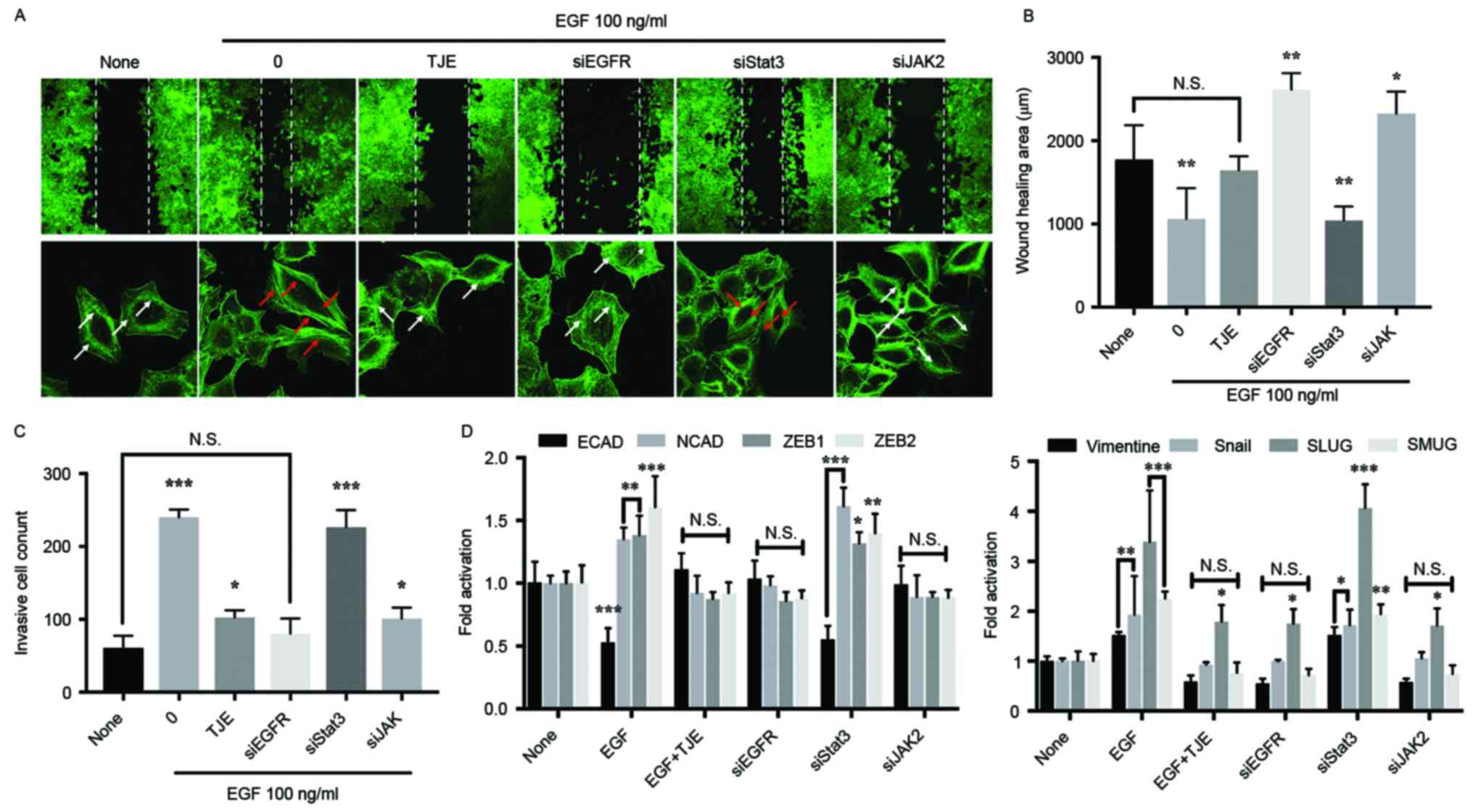|
1
|
Ferlay J, Soerjomataram I, Dikshit R, Eser
S, Mathers C, Rebelo M, Parkin DM, Forman D and Bray F: Cancer
incidence and mortality worldwide: Sources, methods and major
patterns in GLOBOCAN 2012. Int J Cancer. 136:E359–E386. 2015.
View Article : Google Scholar : PubMed/NCBI
|
|
2
|
Mathers CD, Fat DM, Inoue M, Rao C and
Lopez AD: Counting the dead and what they died from: An assessment
of the global status of cause of death data. Bull World Health
Organ. 83:171–177. 2005.PubMed/NCBI
|
|
3
|
Torre LA, Bray F, Siegel RL, Ferlay J,
Lortet-Tieulent J and Jemal A: Global Cancer Statistics. CA Cancer
J Clin. 65:87–108. 2015. View Article : Google Scholar : PubMed/NCBI
|
|
4
|
Hamra GB, Guha N, Cohen A, Laden F,
Raaschou-Nielsen O, Samet JM, Vineis P, Forastiere F, Saldiva P,
Yorifuji T, et al: Outdoor particulate matter exposure and lung
cancer: A systematic review and meta-analysis. Environ Health
Perspect. 122:906–911. 2014.PubMed/NCBI
|
|
5
|
Straif K, Cohen A and Samet J: Air
Pollution and Cancer. IARC Scientific Publication No. 161 Lyon:
IARC Press; https://www.iarc.fr/en/publications/books/sp161/AirPollutionandCancer161.pdf
|
|
6
|
International Agency for Research on
Cancer: Personal Habits and Indoor Combustions. IARC Monographs on
the Evaluation of Carcinogenic Risks to Humans. 100E. Lyon: IARC
Press; http://monographs.iarc.fr/ENG/Monographs/vol100E/mono100E.pdf
|
|
7
|
Líbalová H, Krčková S, Uhlířová K, Kléma
J, Ciganek M, Rössner P Jr, Šrám RJ, Vondráček J, Machala M and
Topinka J: Analysis of gene expression changes in A549 cells
induced by organic compounds from respirable air particles. Mutat
Res. 770:94–105. 2014. View Article : Google Scholar : PubMed/NCBI
|
|
8
|
Krishnan VG, Ebert PJ, Ting JC, Lim E,
Wong SS, Teo AS, Yue YG, Chua HH, Ma X, Loh GS, et al: Whole-genome
sequencing of Asian lung cancers: Second-hand smoke unlikely to be
responsible for higher incidence of lung cancer among Asian
never-smokers. Cancer Res. 74:6071–6081. 2014. View Article : Google Scholar : PubMed/NCBI
|
|
9
|
Alper O, Bergmann-Leitner ES, Bennett TA,
Hacker NF, Stromberg K and Stetler-Stevenson WG: Epidermal growth
factor receptor signaling and the invasive phenotype of ovarian
carcinoma cells. J Natl Cancer Inst. 93:1375–1384. 2001. View Article : Google Scholar : PubMed/NCBI
|
|
10
|
Ahmed N, Maines-Bandiera S, Quinn MA,
Unger WG, Dedhar S and Auersperg N: Molecular pathways regulating
EGF-induced epithelio-mesenchymal transition in human ovarian
surface epithelium. Am J Physiol Cell Physiol. 290:C1532–C1542.
2006. View Article : Google Scholar : PubMed/NCBI
|
|
11
|
Siegelin MD and Borczuk AC: Epidermal
growth factor receptor mutations in lung adenocarcinoma. Lab
Invest. 94:129–137. 2014. View Article : Google Scholar : PubMed/NCBI
|
|
12
|
Yeom SY, Nam DH and Park C: RRAD promotes
EGFR-mediated STAT3 activation and induces temozolomide resistance
of malignant glioblastoma. Mol Cancer Ther. 13:3049–3061. 2014.
View Article : Google Scholar : PubMed/NCBI
|
|
13
|
Hipp S, Walch A, Schuster T, Losko S, Laux
H, Bolton T, Höfler H and Becker KF: Activation of epidermal growth
factor receptor results in snail protein but not mRNA
overexpression in endometrial cancer. J Cell Mol Med. 13:3858–3867.
2009. View Article : Google Scholar : PubMed/NCBI
|
|
14
|
Anupama EG, Oliver B and Khatri L: Nuclear
signaling of EGFR and EGFRvIII in glioblastoma. Molecular Targets
of CNS tumors. Garami M: Croatia: InTech, Rijeka; 2011, https://www.scribd.com/document/112167777/Molecular-Targets-of-CNS-Tumors
|
|
15
|
Gong C, Zhang Y, Shankaran H and Resat H:
Integrated analysis reveals that STAT3 is central to the crosstalk
between HER/ErbB receptor signaling pathways in human mammary
epithelial cells. Mol Biosyst. 11:146–158. 2015. View Article : Google Scholar : PubMed/NCBI
|
|
16
|
Lo HW, Hsu SC, Ali-Seyed M, Gunduz M, Xia
W, Wei Y, Bartholomeusz G, Shih JY and Hung MC: Nuclear interaction
of EGFR and STAT3 in the activation of the iNOS/NO pathway. Cancer
Cell. 7:575–589. 2005. View Article : Google Scholar : PubMed/NCBI
|
|
17
|
Kim GT, Lee SH and Kim YM: Torilis
japonica extract, a new potential EMT suppressor agent by
regulation of EGFR signaling pathways. Int J Oncol. 45:1673–1679.
2014.PubMed/NCBI
|
|
18
|
Brand TM, Iida M, Luthar N, Starr MM,
Huppert EJ and Wheeler DL: Nuclear EGFR as a molecular target in
cancer. Radiother Oncol. 108:370–377. 2013. View Article : Google Scholar : PubMed/NCBI
|
|
19
|
Liu L, McBride KM and Reich NC: STAT3
nuclear import is independent of tyrosine phosphorylation and
mediated by importin-alpha3. Proc Natl Acad Sci USA. 102:8150–8155.
2005. View Article : Google Scholar : PubMed/NCBI
|
|
20
|
Michael V, Tamas D, Dzina K, Swen L, Anne
S, Valeria P, Walter R and Gerhard MN: The role of the N-terminal
domain in dimerization and nucleocytoplasmic shutting of latent
STAT3. J Cell Sci. 124:900–909. 2010.
|
|
21
|
Wang SC and Hung MC: Nuclear translocation
of the epidermal growth factor receptor family membrane tyrosine
kinase receptors. Clin Cancer Res. 15:6484–6489. 2009. View Article : Google Scholar : PubMed/NCBI
|
|
22
|
Lo HW, Hsu SC and Hung MC: EGFR signaling
pathway in breast cancers: From traditional signal transduction to
direct nuclear translocalization. Breast Cancer Res Treat.
95:211–218. 2006. View Article : Google Scholar : PubMed/NCBI
|













